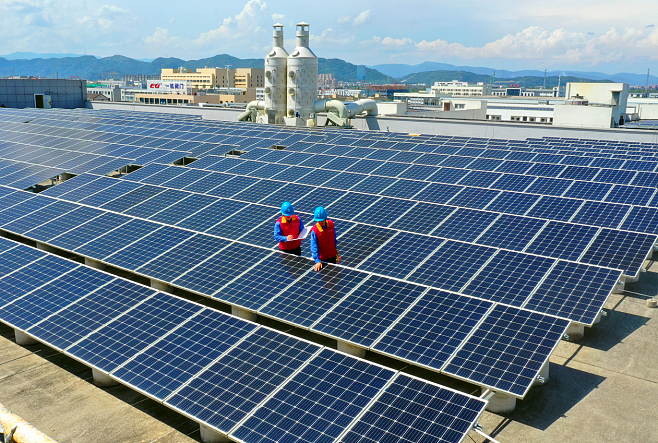1. What is polycrystalline solar panel?
All types of solar panels work in different ways. Therefore, what is polycrystalline solar panel? The polycrystalline solar panel is a solar module composed of high conversion efficiency polycrystalline solar cells arranged in different series and parallel arrays.
2. Polycrystalline solar panel
The composition and functions of the polycrystalline solar panel:
1. Tempered glass: The role is to protect the main body of power generation (solar cells). The requirements for light transmission selection:
(1) The light transmittance must be high (generally more than 91%);
(2) Ultra-white tempered treatment
2. EVA: The aim is to bond and fix the tempered glass and the main body of power generation (such as solar cells). The quality of the transparent EVA material directly affects the life of the module. The EVA exposed to the air is easy to age and turn yellow, which affects the light transmittance of the module, thereby affecting the power generation quality of the module. In addition to the quality of EVA itself, the lamination process of the solar products supplier also has a great impact. Problems such as insufficient EVA glue connection and insufficient bonding strength between EVA and tempered glass and the backplane will cause the EVA to age prematurely and affect the life of the components.
3. Solar cells: The main function is to generate electricity. In the power generation market, the mainstream is crystalline solar cells and thin films, which both have advantages and disadvantages. The crystalline solar cells of the solar product China have relatively low equipment costs. However, the consumption and cost of solar cells are very high, and the photoelectric conversion efficiency is also high. Thin-film solar cells are more suitable for generating electricity under outdoor sunlight. It has relatively high equipment costs, but low consumption and battery costs. The photoelectric conversion efficiency is more than half that of crystalline cells, but the weak light effect is very good. It can also generate electricity from ordinary light, such as the solar cells on calculators.
4. Backplane: The function is to seal, insulate and waterproof. It generally uses TPT, TPE and other materials because it has to be resistant to aging. Most solar product suppliers have a 25-year warranty, tempered glass and aluminum can generally achieve it. The key is whether the backplane and silica gel can meet the requirements.
5. Aluminum alloy: It can protect the laminated parts, and play a sealing and supporting role.
6. Junction box: The function is to protect the whole power generation system and play the role of a current transfer station. If the component is short-circuited, the junction box will automatically disconnect the short-circuit battery. The key to preventing the whole system from burning out is the choice of diodes. In addition, different types of cells have different diodes.
7. Silica gel: It has a sealing function and it is used to seal the junction between the component and the aluminum alloy frame, the between the component and the junction box. Some solar product suppliers use double-sided tape and foam instead of silica gel. Silica gel is widely used in China, which has a simple process and it is easy to operate at a very low cost.
